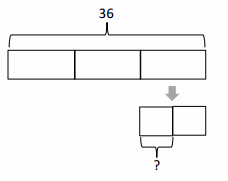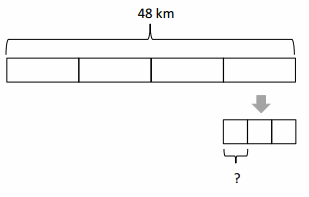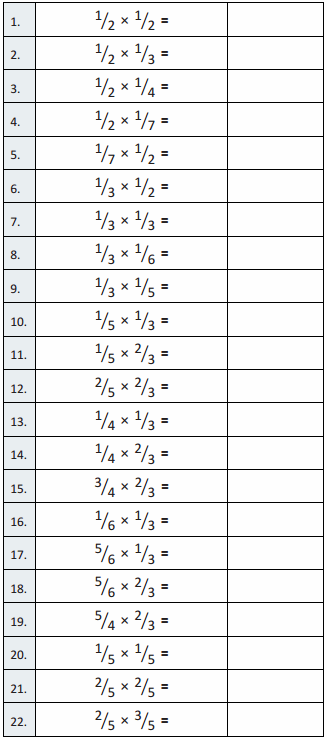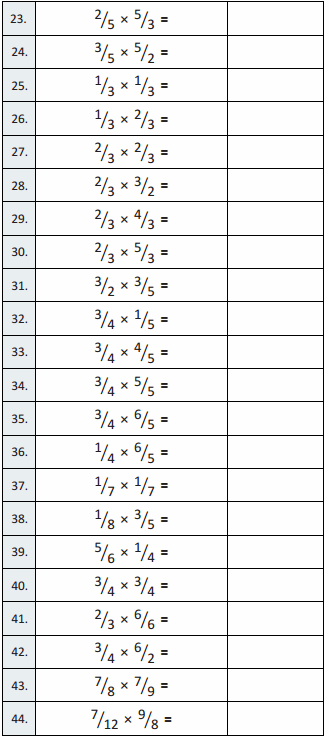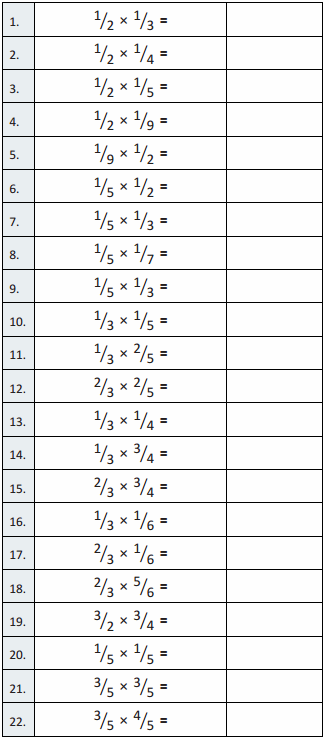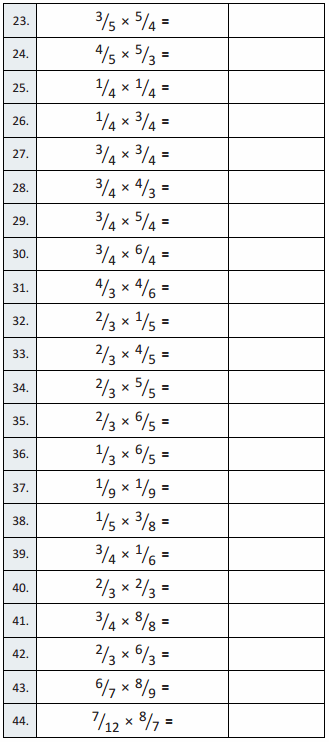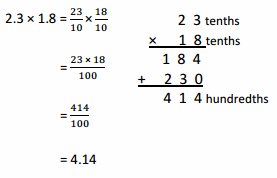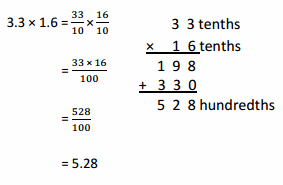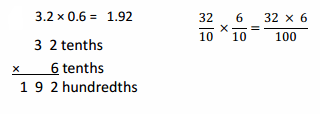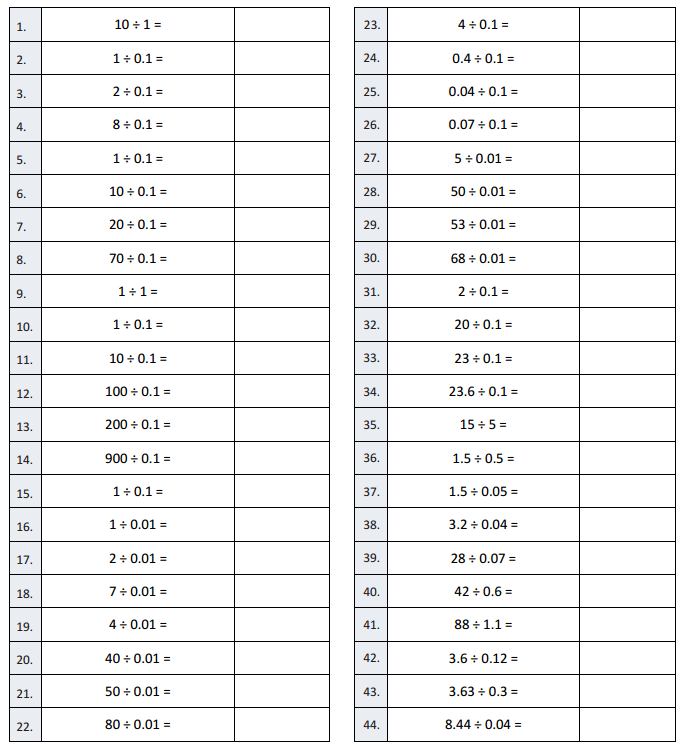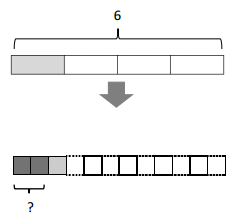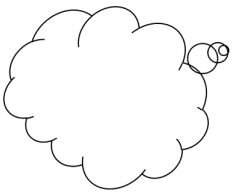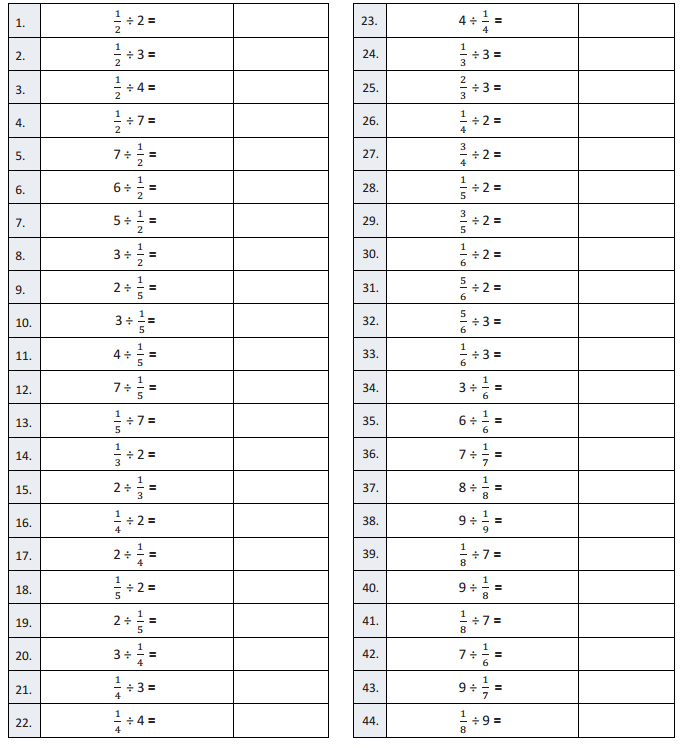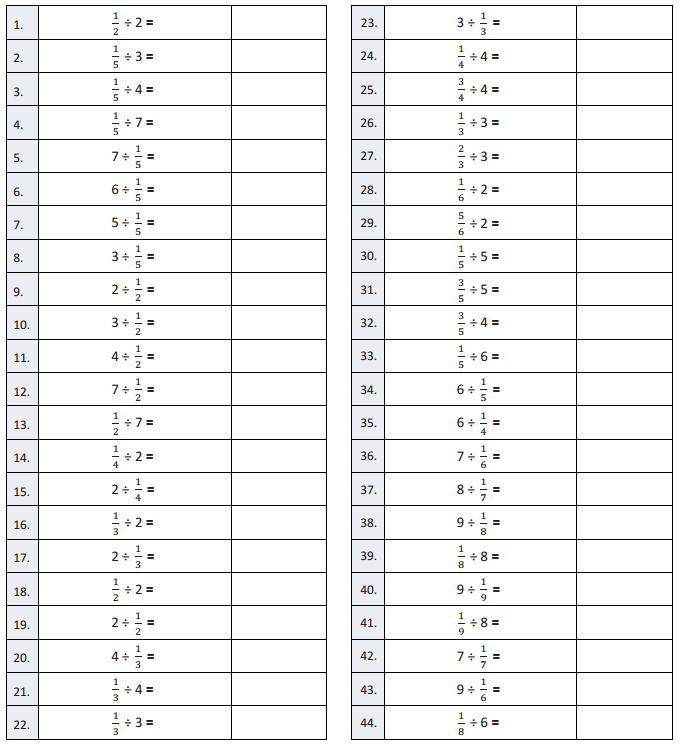Engage NY Eureka Math 5th Grade Module 4 Lesson 6 Answer Key
Eureka Math Grade 5 Module 4 Lesson 6 Sprint Answer Key
A
Divide Whole Numbers


Question 1.
1 ÷ 2 =
Question 2.
1 ÷ 3 =
Question 3.
1 ÷ 8 =
Question 4.
2 ÷ 2 =
Question 5.
2 ÷ 3 =
Question 6.
3 ÷ 3 =
Question 7.
3 ÷ 4 =
Question 8.
3 ÷ 10 =
Question 9.
3 ÷ 5 =
Question 10.
5 ÷ 5 =
Question 11.
6 ÷ 5 =
Question 12.
7 ÷ 5 =
Question 13.
9 ÷ 5 =
Question 14.
2 ÷ 3 =
Question 15.
4 ÷ 4 =
Question 16.
5 ÷ 4 =
Question 17.
7 ÷ 4 =
Question 18.
4 ÷ 2 =
Question 19.
5 ÷ 2 =
Question 20.
10 ÷ 5 =
Question 21.
11 ÷ 5 =
Question 22.
13 ÷ 5 =
Question 23.
6 ÷ 2 =
Question 24.
7 ÷ 2 =
Question 25.
8 ÷ 8 =
Question 26.
9 ÷ 8 =
Question 27.
15 ÷ 8 =
Question 28.
8 ÷ 4 =
Question 29.
11 ÷ 4 =
Question 30.
15 ÷ 2 =
Question 31.
24 ÷ 5 =
Question 32.
17 ÷ 4 =
Question 33.
20 ÷ 3 =
Question 34.
13 ÷ 6 =
Question 35.
30 ÷ 7 =
Question 36.
27 ÷ 8 =
Question 37.
49 ÷ 9 =
Question 38.
29 ÷ 6 =
Question 39.
47 ÷ 7 =
Question 40.
53 ÷ 8 =
Question 41
67 ÷ 9 =
Question 42.
59 ÷ 6 =
Question 43.
63 ÷ 8 =
Question 44.
71 ÷ 9 =
B
Divide Whole Numbers
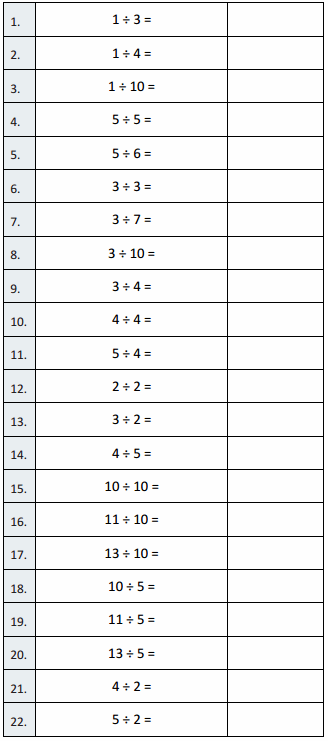
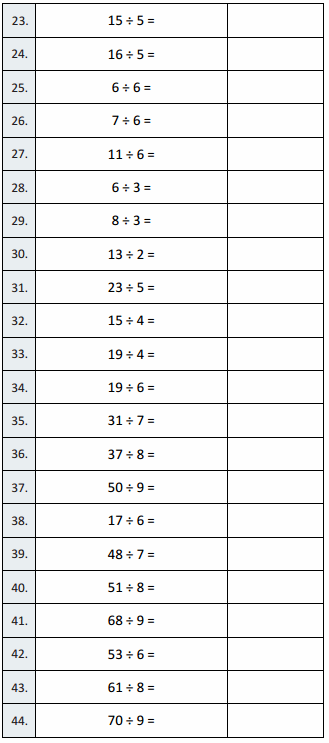
Question 1.
1 ÷ 3 =
Question 2.
1 ÷ 4 =
Question 3.
1 ÷ 10 =
Question 4.
5 ÷ 5 =
Question 5.
5 ÷ 6 =
Question 6.
3 ÷ 3 =
Question 7.
3 ÷ 7 =
Question 8.
3 ÷ 10 =
Question 9.
3 ÷ 4 =
Question 10.
4 ÷ 4 =
Question 11.
5 ÷ 4 =
Question 12.
2 ÷ 2 =
Question 13.
3 ÷ 2 =
Question 14.
4 ÷ 5 =
Question 15.
10 ÷ 10 =
Question 16.
11 ÷ 10 =
Question 17.
13 ÷ 10 =
Question 18.
10 ÷ 5 =
Question 19.
11 ÷ 5 =
Question 20.
13 ÷ 5 =
Question 21.
4 ÷ 2 =
Question 22.
5 ÷ 2 =
Question 23.
15 ÷ 5 =
Question 24.
16 ÷ 5 =
Question 25.
6 ÷ 6 =
Question 26.
7 ÷ 6 =
Question 27.
11 ÷ 6 =
Question 28.
6 ÷ 3 =
Question 29.
8 ÷ 3 =
Question 30.
13 ÷ 2 =
Question 31.
23 ÷ 5 =
Question 32.
15 ÷ 4 =
Question 33.
19 ÷ 4 =
Question 34.
19 ÷ 6 =
Question 35.
31 ÷ 7 =
Question 36.
37 ÷ 8 =
Question 37.
50 ÷ 9 =
Question 38.
17 ÷ 6 =
Question 39.
48 ÷ 7 =
Question 40.
51 ÷ 8 =
Question 41.
68 ÷ 9 =
Question 42.
53 ÷ 6 =
Question 43.
61 ÷ 8 =
Question 44.
70 ÷ 9 =
Eureka Math Grade 5 Module 4 Lesson 6 Problem Set Answer Key
Question 1.
Find the value of each of the following.
a. 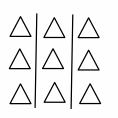
\(\frac{1}{3}\) of 9 =
\(\frac{2}{3}\) of 9 =
\(\frac{3}{3}\) of 9 =
b. 
\(\frac{1}{3}\) of 15 =
\(\frac{2}{3}\) of 15 =
\(\frac{3}{3}\) of 15 =
c. 
\(\frac{1}{5}\) of 20 =
\(\frac{4}{5}\) of 20 =
\(\frac{}{5}\) of 20 = 20
d. 
\(\frac{1}{8}\) of 24 =
\(\frac{3}{8}\) of 24 =
\(\frac{4}{8}\) of 24 =
\(\frac{6}{8}\) of 24 =
\(\frac{7}{8}\) of 24 =
Question 2.
Find \(\frac{4}{7}\) of 14. Draw a set, and shade to show your thinking.
Question 3.
How does knowing \(\frac{1}{8}\) of 24 help you find three-eighths of 24? Draw a picture to explain your thinking.
Question 4.
There are 32 students in a class. Of the class, \(\frac{3}{8}\) of the students bring their own lunches. How many students bring their lunches?
Question 5.
Jack collected 18 ten-dollar bills while selling tickets for a show. He gave \(\frac{1}{6}\) of the bills to the theater and kept the rest. How much money did he keep?
Eureka Math Grade 5 Module 4 Lesson 6 Exit Ticket Answer Key
Question 1.
Find the value of each of the following.

a. \(\frac{1}{4}\) of 16 =
b. \(\frac{3}{4}\) of 16 =
Question 2.
Out of 18 cookies, \(\frac{2}{3}\) are chocolate chip. How many of the cookies are chocolate chip?
Eureka Math Grade 5 Module 4 Lesson 6 Homework Answer Key
Question 1.
Find the value of each of the following.
a. 
\(\frac{1}{3}\) of 12 =
\(\frac{2}{3}\) of 12 =
\(\frac{3}{3}\) of 12 =
b. 
\(\frac{1}{4}\) of 20 =
\(\frac{2}{4}\) of 20 =
\(\frac{3}{4}\) of 20 =
\(\frac{4}{4}\) of 20 =
c. 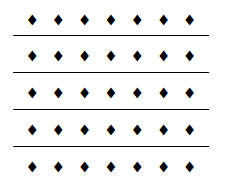
\(\frac{1}{5}\) of 35 =
\(\frac{2}{5}\) of 35 =
\(\frac{3}{5}\) of 35 =
\(\frac{4}{5}\) of 35 =
\(\frac{5}{5}\) of 35 =
\(\frac{6}{5}\) of 35 =
Question 2.
Find \(\frac{2}{3}\) of 18. Draw a set and shade to show your thinking.
Question 3.
How does knowing \(\frac{1}{5}\) of 10 help you find \(\frac{3}{5}\) of 10? Draw a picture to explain your thinking.
Question 4.
Sara just turned 18 years old. She spent \(\frac{4}{9}\) of her life living in Rochester, NY. How many years did Sara live in Rochester?
Question 5.
A farmer collected 12 dozen eggs from her chickens. She sold \(\frac{5}{6}\) of the eggs at the farmers’ market and gave the rest to friends and neighbors.
a. How many dozen eggs did the farmer give away? How many eggs did she give away?
b. She sold each dozen for $4.50. How much did she earn from the eggs she sold?


